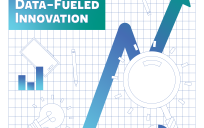This blog is an excerpt from GovLoop’s recent industry perspective, Leveraging Your Video Data with Open Source. Download the full perspective here.
Open source offers agencies not only additional technological capabilities – like greater scalability, storage and speed – but also cost-savings and security enhancements. But making this transition can be overwhelming.
“There’s systems, there’s people, there’s training, there’s processes that all have to change, and it all has to happen ubiquitously,” said Joe Sangiuliano, Red Hat’s Director of Civilian Accounts. It’s not an easy task, which is why agencies must take a holistic approach.
Before moving any data over to an open source platform, you need to analyze current processes within your agency: how data is handled, who uses it and for what purposes.
Here are some tips to “opening” up your department:
1. Assess your current environment:
Consider the pros and cons of keeping the current infrastructures intact. It may be realistic to keep some portions of the proprietary structures in place, and just move some applications and data to an open platform. For some agencies, it may be appropriate to move most mission-critical applications and only maintain a small part of the existing infrastructure.
2. Review all security standards and compliance regulations.
When adopting any new technology, it is also important to consider certain industry and security standards, especially for storing sensitive data. For example, agencies will need to consider the CJIS Security Policy, National Institute of Science and Technology standards and Federal Information Security Management Act security regulations when selecting storage platforms. Open source, when supported properly, meets these standards and regulations.
3. Ease your way in.
Another recommendation is to start small, but employ an enterprise-wide mentality when shifting to open source. Most importantly, don’t forget to consider personnel and culture throughout this transition. Staff will need to be trained and retrained throughout the process in order to make the transition successful.
“Start with measured, tactical things to decouple dependencies,” said Sangiuliano, “and move them toward a more open architecture through retraining and consulting approaches.”
When implemented intentionally and holistically, open source solutions alleviate more than just technological concerns. As Sangiuliano suggests, the transition to open source needs to focus on the people just as much as the IT infrastructure itself.
“We are here to analyze, to look at your people and processes, just as much as we look at the technology. The technology is there, the capability is proven; but the question is how do we make it work within your environment which is growing over time?” Sangiuliano asked.
Download the full perspective here.






Leave a Reply
You must be logged in to post a comment.